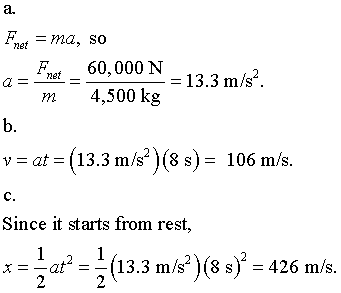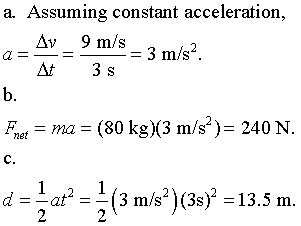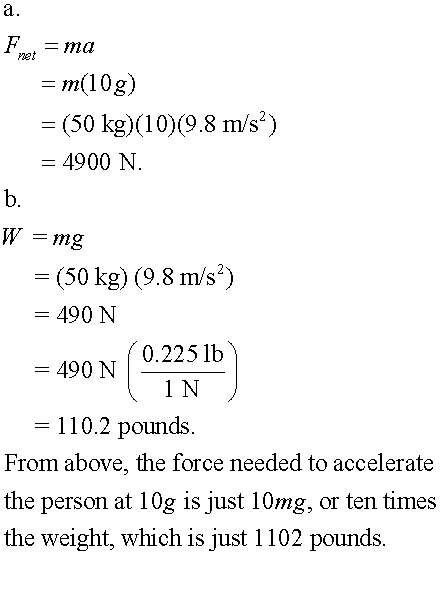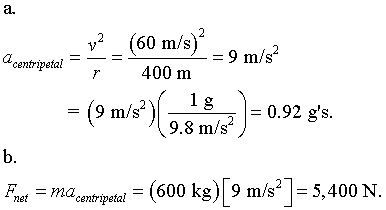
Q2.21
The road exerts an upward force called the normal force. This is the force that keeps the car from falling into the road and soil.
The road also exerts a horizontal force we call friction. Friction always acts tangent to the surface. If a forward-moving car is breaking, the friction force on the car is to the rear. If it is speeding up, the frictional force is forward. If the car is also going around a curve, a frictional force toward the centerpoint of the curve of the road acts in addition to the other forces discussed.
Q2.22
To jump, you push down on the floor with your feet. That means that the floor must push up on you with just as much force, launching you into the air.
Q2.27
High jump, long jump, pole vault, and the longer hurdles will be radically affected. They will jump much higher, and they could leap several hurdles at a time, because they can jump so high and stay in the air so long.
Sprints might actually take longer. The lighter weight means less normal force, which means less frictional force, which means less acceleration. The mass of the runners is the same. So I expect slower sprints.
Long distance races, especially marathons, will have faster times, and the runners will be less tired, because they will cover much more distance in each step. This means fewer steps, more time to "rest" while in air between steps, so the athletes can give maximum exertion each step for many, many miles.
Gymnastics and diving would be amazing. The athletes could leap so high and stay in the air for a very long time, so the number of twists and tumbles would be quite impressive. An iron cross would be easy for even me. Bar routines would be much easier, and much slower.
Weight lifting would change in the most predictible way: athletes would be able to lift much bigger weights, but these bigger weights would weigh in fact a little less than what they could lift on earth. (The same weight has more mass and inertia on the moon. On a lift like the clean and jerk, the increased inertia makes it harder to lift the same weight.)
In basketball, every player could leap from midcourt and slam dunk the ball. Sudden changes in direction would be harder because of reduced frictional force, similar to the problem of sprints.
In volleyball, spiking would be easier because one can jump so high. However, digs would be harder for two reasons: changing horizontal velocity is tough with so little frictional force (because of the low normal force in low gravity), and getting low to reach the ball would take a long time.
Soccer faces the directional change challenge, but players could pass the length of the field quite easily. Similarly, any throw-in would be as good a scoring opportunity as a corner kick.
Water polo would be easier, as reduced weight would make it easier to lift one's body part way out of the water for a shot or a pass.
Swimming (races), however, will not be much affected. The water drag will stay about the same. (We will later see that the swimmers' bodies will float no higher or lower in lunar gravity.)
Synchronized swimming, like water polo, would be easier, but would still look silly.
P2.10

P2.11

P2.13

p2.18

P2.19.
